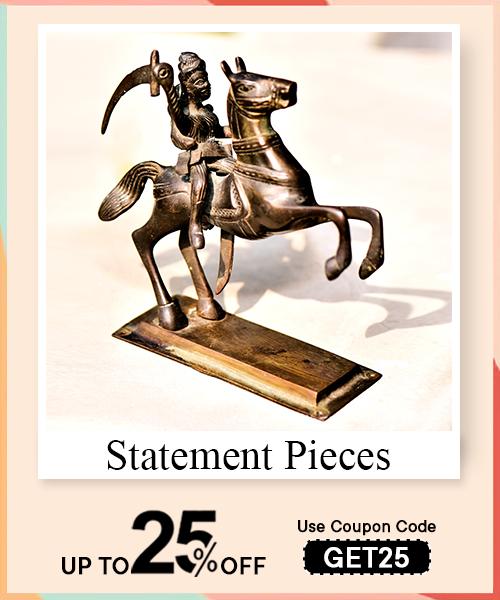The festival signifies the onset of the Maharashtrian new year. According to the lunar calendar, this is observed on the first day of the Chaitra month. Gudi Padwa is celebrated on different dates yearly according to the Gregorian calendar, but it usually falls in March or April.
Gudi Padwa, the vibrant festival marking the beginning of the Hindu New Year and the arrival of spring, will be celebrated on Sunday, March 30, 2025. This auspicious day is primarily observed in Maharashtra and Goa with immense zeal and enthusiasm. Rooted deeply in tradition, Gudi Padwa carries a profound cultural and spiritual significance.
The day is associated with the raising of the Gudi, a symbolic flag adorned with a bright silk cloth, neem leaves, sugar garlands, and a copper or silver pot on top. This flag is hoisted outside homes to signify prosperity, victory, and the warding off of negative energies. The Gudi is believed to bring blessings and good fortune, marking the start of a new chapter.
Families come together to clean their homes, draw vibrant rangoli designs at their doorsteps, and prepare traditional delicacies like puran poli, shrikhand, and pooranachi kheer. The festival also sees people wearing new clothes and visiting temples to offer prayers for health, wealth, and happiness in the year ahead.
Gudi Padwa is more than just a celebration; it is a reminder of renewal, hope, and resilience. As you prepare for this special day, embrace its traditions and look forward to a year filled with positivity and success.
Read More : Happy Holi: Wishes, Messages, Quotes & Status
The legend behind Gudi Padwa is interesting. Lord Rama returned to Ayodhya after defeating Ravana, and the people of Ayodhya celebrated his victory by hoisting a 'Dhwaj' on a bamboo pole. This flag was called 'Brahmadhwaj' or 'Gudhi' and was decorated with neem leaves, mango leaves, and a piece of cloth with red and yellow colour. This flag was hoisted on the first day of Chaitra. Thus, Gudi Padwa is also considered a symbol of victory and new beginnings. However, the origins of Gudi Padwa celebrations can be traced back to the Maratha Empire. It is believed that Chhatrapati Shivaji Maharaj first celebrated it after his victory over the Mughals. It is thought that the Gudi symbolises the triumph of good over evil, and the Kalash on the top represents abundance and prosperity. Gudi Padwa is hence not merely a festival but a celebration of culture, tradition, and unity. It brings people together and spreads love, peace, and harmony. The festival also reminds us of the importance of preserving our rich cultural heritage and passing it on to the next generation.
According to the lunar calendar, the day marks the beginning of the Hindu New Year. It is a time for new beginnings, resolutions, and fresh starts. The festival also has a rich cultural significance and is celebrated differently across these regions. For instance, in Maharashtra, this festival is celebrated by hoisting a Gudi, a decorated pole with colourful cloth, flowers, and a copper pot called a kalash on the top. This Gudi is placed outside the house as a symbol of victory, prosperity, and good fortune. In Goa, the festival is known as Samvatsar Padvo and is celebrated by preparing traditional dishes such as ukdiche modak, etc. In Karnataka, the festival is known as Ugadi and is marked by preparing a special dish called Obbattu or Holige. Gudi Padwa is a great time to renew relationships and forgo past grievances. People come together to celebrate the festival, exchange greetings, and enjoy traditional dishes. It is a time to strengthen family bonds and build new relationships.
Read More : Mahashivratri Special - Shiv Mandir decoration ideas
"Gudi" refers to a bamboo stick with a decorated cloth, and "Padwa" means the first day of the new year. Today, people hoist a Gudi, believed to bring good luck and ward off evil spirits. The Gudi is made by tying a colourful cloth on top of a bamboo stick adorned with neem leaves, mango leaves, and a garland made of sugar crystals called "sakhar gathi." It is then hoisted on the roof or balcony of the house. Boosting the Gudi outside the house is believed to bring positive energy and abundance. On Gudi Padwa, people wake up early and dress in new clothes. They decorate their household with rangoli and torans made of flowers and mango leaves. Many prepare dishes such as Puran Poli, Aamras, and Sabudana Khichdi. They may also prepare neem leaves and jaggery, a traditional dish that signifies the bitterness and sweetness of life. A special dish called Shrikhand Puri is ready and offered to the deities as worship. People also exchange sweets, gifts, and greetings with each other.

- The colours of the Gudi, i.e., yellow, saffron, and green, hold a deep significance.
- The yellow signifies Satto Guna and the Sun and Fire God. This helps to clear away tamasic energy.
- The other two colours are dedicated to Lord Bhrama and his creation of the divine universe. It also epitomises the fire elements and pure fire.
- The Gudi's red flowers represent passion against challenging elements and testing conditions. As per the Vedas, the same means the fierce energy of Goddess Kali to reduce the evil forces prevailing in the area.
- The panchamrit has sugar crystals that enhance qualities of happiness, humility, and respect for all. This is because Lord Rama used polite words for all His subjects.
- The neem leaves used to decorate the Gudi are believed to signify immortality. These also have medicinal properties and help in purifying the air. The mango leaves, on the other hand, symbolise happiness and good fortune.
- The copper or silver pot at the top of the Gudi represents prosperity and abundance. This means Purna Kalash and has specific usage for pooja ceremonies.
Placing Gudi at your home helps to usher awareness, prosperity, and happiness. Placing the well-designed gudi in the eastern direction helps to channel positive energy into life.
To design the same, follow the below-mentioned procedures:
- Use a large bamboo stick and tie the cloth on the end
- Fabrics for red, yellow, saffron shades, and bright borders must be tied to the stick.
- Now put mango leaves and neem around the same.
- Choose a flower garland, ideally a marigold, to enhance the same.
- Now use sugar crystals to stick around the cloths. This is called Shakar Gathi.
- Place an inverted kalash on the entire stick.
- Place it in the eastern direction or hoist it as the flag of Brahma.
Read More : Maha Shivratri Wishes in English
Before beginning the puja, bathe before sunrise and apply oil to imbibe sun energy into your body. You can choose to do havan or puja for added benefits.















